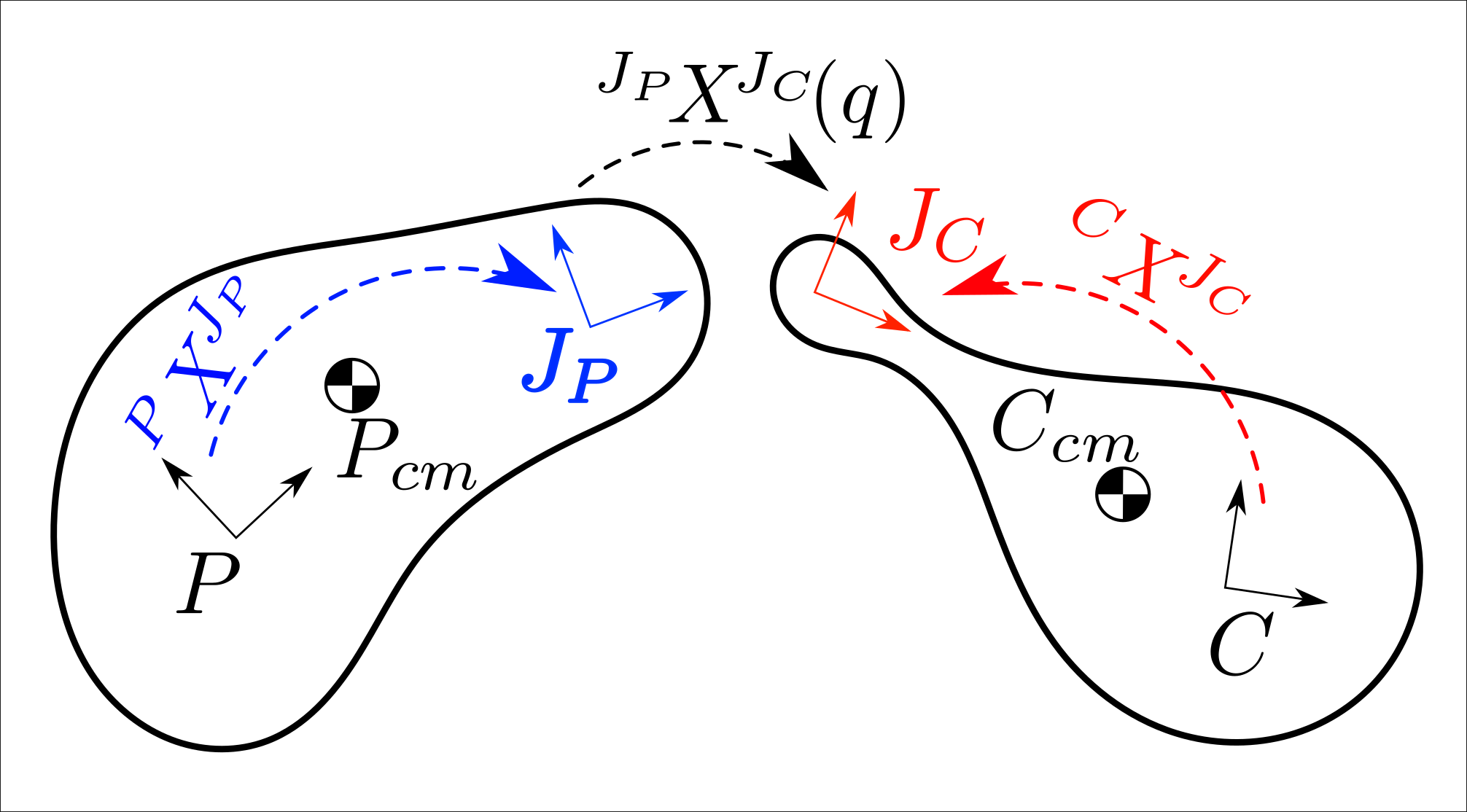Original comment by Louise Poubel (Bitbucket: chapulina, GitHub: chapulina).
- Yes,
use_parent_model_frame=truemeans the immediate parent<model>'s frame (not a grandparent<model>for example) use_parent_model_frame=falsemeans the joint's child link frame
Regarding the "joint frame on the parent body", two details might make this clearer:
- The joint pose only defines the position of the constraint the moment the joint is created
- SDF defines a graph, not a tree
I think we lost a lot of documentation details since we started including pose.sdf into files.


Original report (archived issue) by Alejandro Castro (Bitbucket: amcastro0622).
Reading the documentation for an SDF's joint axis here I had the following questions:
use_parent_model_frame=truemeans...? the<model>frame I believe, could it be confirmed? the word "parent" overloads with "parent body" in the same<joint>doc and thus the confusion.use_parent_model_frame=falsemeans... the "joint frame". How is this "joint frame" defined? where is the origin of this joint frame?In version 1.6 the documentation for
<pose>itself or the<frame>in which this pose is measured, are not specified. However, version 1.4 doc does state that the default is the identity transform "in the child link frame" (ala urdf, makes sense).The questions are:
It seems that, in current version 1.6 an old issue, 494, is mentioned. Is that fully resolved?
Finally, nothing is said about the joint frame on the "parent" body. It'd seem that the implicit convention is that this frame gets defined by making it coincident with the frame on the child body (referred to as, I believe, the "joint frame"). If this is true, it should be explicitly stated somewhere. If not, the documentation should be updated to reflect the actual convention.